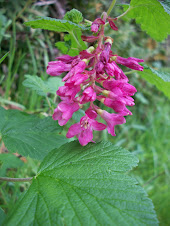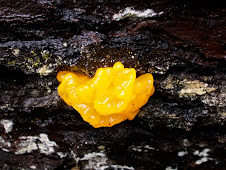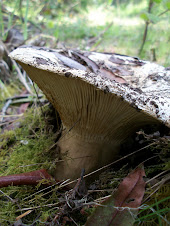This last week I spent wandering from friend to friend in the bay area. On my way from Antioch to Sunnyvale I had extra time before I had to meet a friend, so when I hit major traffic I decided to just stop at the nearest park. This is how I wandered into Contra Loma Park in the East Bay area. I had already been to the Black Diamond Mines, just an exit or so away the day before and expected more of the same rolling green hills with cows. So I was pleasantly surprised when I turned the corner of the cow pasture to find a huge lake.
Looking like such a tourist I walked around the lake, binoculars and all. I stopped multiple, multiple times to take pictures (some of which I have added to this post). I was so excited to be able to go bird watching! I got to see multiple Anna's Hummingbirds, Red Winged Blackbirds, Cormorants, ducks and Killdeer. I saw several American Kestrels- those cute little predators with the beautiful rusty red and powder blue. I saw what I think was a Cooper's Hawk and multiple massive Turkey Vultures gliding over the green hillsides. I stopped to photograph the many wildflowers that included California Poppies, Lupine and Phacelia. I stopped to watch the bumblebees covered in orange pollen flitting between poppies and watch ducks take off from the lake in their awkward splish-splash way. The park was clean. It even had bathrooms with soap! (Presence of soap in a park bathroom is a big deal.) I walked past a fenced-off lagoon which I heard would open soon as a place for people to swim.
All together it was a great experience and I highly recommend the park. I saw multiple other paths that went off into the hills which I did not follow- some of them great bike paths. The people I passed were all very friendly and greeted me.
Saturday, March 27, 2010
Wednesday, March 10, 2010
Natural Cold Remedies
So I have gotten sick lately, which is why the banana research has come to a screeching halt. Yesterday I received a care package of hometown grapefruit from my awesome mother and was so stoked! Today I slurped half of one down, feeling much better already. This led me to wonder if in fact grapefruit has healing properties, aside from its high dosage of Vitamin C. Online I found that it is a good detoxifier and that it is suggested you not only eat the flesh but also some of the white pulp of the grapefruit to promote immunity. That being said, grapefruit can also interfere with certain medications such as terfenadine and astemizole- which are both antihistamines. It also interferes with some cholesterol lowering drugs and a list of other drugs. So I suggest thinking about what you are taking before you consume a lot of grapefruit juice. The site I found this info on is listed below.(1)
Aside from that, I suggest (as my mother has always taught me) to gargle salt water. I think it actually does clear your throat. And as always drink LOTS of fluids. If you don't feel much like eating focus mostly on drinking fruit juice and water, with some soup mixed in.
I suggest warm baths to clear your head or microwaving a wet towel to put on your head. Heating pads work wonders if you are sore also.
I've heard spicy foods work to clear to sinuses. Steer clear of milky substances, as they promote phlem. Tea works wonders as well- warm liquids help out. But since tea works as a diuretic make sure to keep drinking water. Keep away from too much coffee as it is a diuretic as well.
Sleep!...sleep! I can't emphasize it enough.
Alright then, I am off to sleep and/or hydrate!
Labels:
colds,
grapefruit,
herbal remedies,
illness
Wednesday, March 3, 2010
Bananas and the Total Perspective Vortex
Let me begin my discussion of bananas with something seemingly unrelated. Please bear with me. I will connect back to the topic of bananas. I may skip around a lot because A) that is the current system my brain is running on and B)I've had too much coffee. If it gets annoying, just skip ahead to BANANA BIOLOGY, keeping in mind the basic idea of approaching all aspects of banana production.
I am currently reading Edward O. Wilson's "Consilience: The Unity of Knowledge" for my Natural Resources class. Wilson writes of how all disciplines of study- biology, the social sciences, ethics and environmental policy for example, really all intersect and should be utilized together. He calls this basic connection between all knowledge consilience. In one chapter he draws a figure to describe the intersection of these fields. I have re-created it in order to make my point clearer. Keep in mind this figure is a reproduction of his and I do not own it in any sense. (Currently I am trying to figure out how to put this picture up)
With a cross-shaped intersection between the four categories in the figure we see imposed divisions between the fields. If concentric circles are drawn in the middle of this cross we see how one could consider each field. As each circle gets smaller the problem between balancing the core of each issue increases.
I feel I have been struggling with consilience my whole life without being able to name it. It causes a certain feverish onset of chaotic thinking in which I jump around to different topics. I seem to be a bit of a non-linear thinker, but sometimes I connect seemingly unrelated issues together with non-linear thinking. Take something that happened to me recently: I was talking to a friend of mine who is a child-development major. She told me she wanted to rennovate a park near her house in order to make it kid-friendly. We both got excited about the project, talking about planting a little patch of native plants or making a community garden in addition to cleaning up the park. In that moment I felt the excitement of combining our two specialties together to synthesize something awesome! It would involve community organizing, a little work with policy, working with volunteers and working with our hands.
To me the process of consilience in thought reminds me of a torture machine in one of the Hitchhiker's Guide to the Galaxy books. This machine, called the Total Perspective Vortex shows its victims everything in the universe and puts their small lives in perspective. In the book everyone died after exposure to the Total Perspective Vortex. I see consilience as cousin to this machine-though not deadly it can certainly be confusing and humbling. Making connections can lead in many different directions, just as this blog is heading in many directions.
I have always felt a passion about many topics of study and see no reason why integration between branches of learning cannot and should not occur. Therefore
in approaching the subject of bananas I want to address all of these fields- what production of bananas is doing to the environment and how environmental policy is involved, the ethics behind the industry, how this affects people and the basic biology of bananas.
And so, thank you for your patience as I waxed a little poetic on the topic of consilience. On to bananas! I will update this post as I obtain more information.
BANANA BIOLOGY (1)
Bananas are interesting plants because they appear to be trees, but are actually large herbaceous plants. The reason it is called herbaceous is because after a banana plant fruits the above-ground portion dies back. Bananas produce many roots, rather than one big taproot like a carrot does. When harvest is over on a banana plantation the above-ground portion of the plants are often cut down.
The flowering portion of a banana plant, or the inflorescence, is composed of "male" pollen-bearing flowers at the base which are fully enclosed in a bell of bracts. Above that is an area of hermaphroditic flowers, then above that are the female flowers. Formation of the inflorescence begins in an upward direction, then as the inflorescence elongates it turns downward.
The main kind of banana grown for economic purposes is Musa acuminata. This is used as a "dessert banana," versus others that are used mainly in cooking. Of this banana there are different breeds. The bananas we eat from the store are greatly larger than wild breeds, due to our choice of breeding to make the bananas larger and longer. Wild bananas are generally finger length and full of seeds. The dessert bananas we eat today do not require any pollination- they just produce an edible pulp. The number of seeds in our bananas has also been reduced via breeding.
Soon to come:
BANANA HISTORY-
The name 'Banana' comes from the Arabic 'elbanan' for 'finger' because wild bananas were the length of a finger.
BANANA SOCIOLOGY- Currently I am having difficulties determining what is fact and fiction when it comes to this and the following topics. I will continue to add on as I find more resources.
BANANA ECONOMICS/ETHICS
BANANAS AND THE ENVIRONMENT
SO...WHAT ARE YOU BUYING WHEN YOU BUY BANANAS?
WHAT CAN YOU DO ABOUT IT?
LINKS
This is a link to the first Chiquita banana commercial. I claim no rights to it, just pointing it out. It took on the task of explaining bananas to people who didn't know how to eat them or ripen them.
Chiquita Commercial
Banana History
LITERATURE CITED
(1) Robinson, J., and C.A.B. International. Bananas and plantains. CABI, 1996. Print.
I am currently reading Edward O. Wilson's "Consilience: The Unity of Knowledge" for my Natural Resources class. Wilson writes of how all disciplines of study- biology, the social sciences, ethics and environmental policy for example, really all intersect and should be utilized together. He calls this basic connection between all knowledge consilience. In one chapter he draws a figure to describe the intersection of these fields. I have re-created it in order to make my point clearer. Keep in mind this figure is a reproduction of his and I do not own it in any sense. (Currently I am trying to figure out how to put this picture up)
With a cross-shaped intersection between the four categories in the figure we see imposed divisions between the fields. If concentric circles are drawn in the middle of this cross we see how one could consider each field. As each circle gets smaller the problem between balancing the core of each issue increases.
I feel I have been struggling with consilience my whole life without being able to name it. It causes a certain feverish onset of chaotic thinking in which I jump around to different topics. I seem to be a bit of a non-linear thinker, but sometimes I connect seemingly unrelated issues together with non-linear thinking. Take something that happened to me recently: I was talking to a friend of mine who is a child-development major. She told me she wanted to rennovate a park near her house in order to make it kid-friendly. We both got excited about the project, talking about planting a little patch of native plants or making a community garden in addition to cleaning up the park. In that moment I felt the excitement of combining our two specialties together to synthesize something awesome! It would involve community organizing, a little work with policy, working with volunteers and working with our hands.
To me the process of consilience in thought reminds me of a torture machine in one of the Hitchhiker's Guide to the Galaxy books. This machine, called the Total Perspective Vortex shows its victims everything in the universe and puts their small lives in perspective. In the book everyone died after exposure to the Total Perspective Vortex. I see consilience as cousin to this machine-though not deadly it can certainly be confusing and humbling. Making connections can lead in many different directions, just as this blog is heading in many directions.
I have always felt a passion about many topics of study and see no reason why integration between branches of learning cannot and should not occur. Therefore
in approaching the subject of bananas I want to address all of these fields- what production of bananas is doing to the environment and how environmental policy is involved, the ethics behind the industry, how this affects people and the basic biology of bananas.
And so, thank you for your patience as I waxed a little poetic on the topic of consilience. On to bananas! I will update this post as I obtain more information.
BANANA BIOLOGY (1)
Bananas are interesting plants because they appear to be trees, but are actually large herbaceous plants. The reason it is called herbaceous is because after a banana plant fruits the above-ground portion dies back. Bananas produce many roots, rather than one big taproot like a carrot does. When harvest is over on a banana plantation the above-ground portion of the plants are often cut down.
The flowering portion of a banana plant, or the inflorescence, is composed of "male" pollen-bearing flowers at the base which are fully enclosed in a bell of bracts. Above that is an area of hermaphroditic flowers, then above that are the female flowers. Formation of the inflorescence begins in an upward direction, then as the inflorescence elongates it turns downward.
The main kind of banana grown for economic purposes is Musa acuminata. This is used as a "dessert banana," versus others that are used mainly in cooking. Of this banana there are different breeds. The bananas we eat from the store are greatly larger than wild breeds, due to our choice of breeding to make the bananas larger and longer. Wild bananas are generally finger length and full of seeds. The dessert bananas we eat today do not require any pollination- they just produce an edible pulp. The number of seeds in our bananas has also been reduced via breeding.
Soon to come:
BANANA HISTORY-
The name 'Banana' comes from the Arabic 'elbanan' for 'finger' because wild bananas were the length of a finger.
BANANA SOCIOLOGY- Currently I am having difficulties determining what is fact and fiction when it comes to this and the following topics. I will continue to add on as I find more resources.
BANANA ECONOMICS/ETHICS
BANANAS AND THE ENVIRONMENT
SO...WHAT ARE YOU BUYING WHEN YOU BUY BANANAS?
WHAT CAN YOU DO ABOUT IT?
LINKS
This is a link to the first Chiquita banana commercial. I claim no rights to it, just pointing it out. It took on the task of explaining bananas to people who didn't know how to eat them or ripen them.
Chiquita Commercial
Banana History
LITERATURE CITED
(1) Robinson, J., and C.A.B. International. Bananas and plantains. CABI, 1996. Print.
Labels:
Bananas,
Biology,
Consilience,
Edward O. Wilson
Subscribe to:
Posts (Atom)













